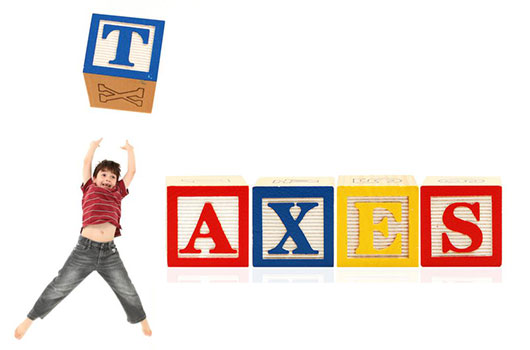
Diapers, clothes, food, toys, braces, college…raising a child can cost a small fortune. So it’s important to take advantage of every opportunity to save money come tax time. Here’s a list of tax breaks every parent should know about.
Dependency Exemption
For each child you list as a dependent on your 2012 return, you’ll reduce your taxable income by $3,800. Even if your child doesn’t live with you, perhaps because of separation or divorce, or is away at college, you still may be able to claim him or her as a dependent. If you’re in the 25% tax bracket, each child you claim could lower your tax due or increase your refund by as much as $950. The IRS has more information here.
Credit for Child & Dependent Care Expenses
If you paid for someone to care for your child so you, or your spouse, could work or look for work, and that child is age 12 or younger, you may include up to $3,000 (up to $6,000 if there are two or more dependents in the household) of work-related expenses in calculating your credit. Remember, payments for day care and day camp (but not overnight camp) may be considered a qualifying work-related expense. The IRS provides additional information in Form 2441.
Child Tax Credit
This is in addition to the credit for child and dependent care expenses. For each child living with you for more than half of 2012, and was still under age 17 at the end of the year, you may qualify for a credit of up to $1,000, depending on your income. See the IRS instructions for Form 1040 to find out if you qualify for this credit.
Additional Child Tax Credit
If you did not get the full amount of the child tax credit, you may be eligible to get this credit. Even better, the additional child tax credit may earn you a refund, even if you don’t owe any tax! See Schedule 8812 from the IRS for details.
Read Related: 6 Tax Deductions Every Mom Should Take & 5 Reasons People File Late
Earned Income Tax Credit
This is a potentially generous income tax credit intended for low to moderate income working individuals and families. Depending on your income, you could get a credit of as much as $3,169 for one qualifying child, $5,236 for two, or $5,892 for three or more. And this, unlike some others, is a refundable credit. That means if your credit exceeds the amount of taxes you owe, the IRS will send you the difference. To qualify, you must meet certain requirements and file a tax return, even if you do not owe any tax or are otherwise not required to file. The IRS has created a helpful EITC home page which explains everything you need to know.
Adoption Credit & Exclusion
If you paid qualifying expenses during 2012 in an attempt to adopt a child, whether or not the adoption was ever finalized, you may be able to claim a credit of up to $12,650. In addition, if your employer provided adoption benefits during 2012, you may be able exclude from taxable income another $12,650. The amount of the credit and exclusion will depend on your income and whether the child is a U.S. citizen or resident, a child with special needs, or a foreign child. For more information, review IRS Form 8839 and its instructions.
Exchange Student Expense Deduction
If you had a student (12th grade or lower) living with you that is neither your dependent nor a relative, you may be able to deduct up to $50 for each month he stayed with you. For more information, see Publication 526 from the IRS.
Income Shifting
If you are self-employed or own a business, you may be able to reduce your family’s tax bill by hiring your children to perform work in your business. The benefit is that the redirected wages will be taxed at a rate lower than yours. Make sure they perform real work and that you pay them a reasonable wage.
Education Related Credits & Deductions
If you have a child in college, there are a slew of credits and deductions from which you can choose. For most people, the American Opportunity Tax Credit will provide the largest tax savings. Those who qualify will receive a tax credit based on 100 percent of the first $2,000, plus 25% of the next $2,000, paid during the taxable year for tuition, fees and course materials. If you don’t qualify for the American Opportunity Tax Credit, there’s a good chance you’ll benefit from the Lifetime Learning Credit. You can learn more about these and other available credits, as well as education related deductions at the IRS’ Tax Benefits for Education Information Center.
Student Loan Interest
If you paid interest on a qualified student loan during 2012, you may be able to deduct that amount from your taxable income, up to a maximum of $2,500. And, unlike many other deductions, you don’t need to itemize your deductions in order to benefit from this since it is claimed as an adjustment to income. To see if you qualify, check out IRS Tax Topic 456.
Health Insurance
If you are self-employed and paid for medical, dental, and qualified long-term care insurance premiums, don’t forget to deduct the cost of the insurance for your children. Even if you don’t claim your child as your dependent you can still take the deduction provided the child hasn’t reached age 27 by the end of 2012. More information is available in IRS Publication 535.
Disclaimer: This article is for informational purposes only and not for the purpose of providing legal or financial advice. Consult your tax advisor to determine whether or not these ideas are appropriate for your unique situation.












